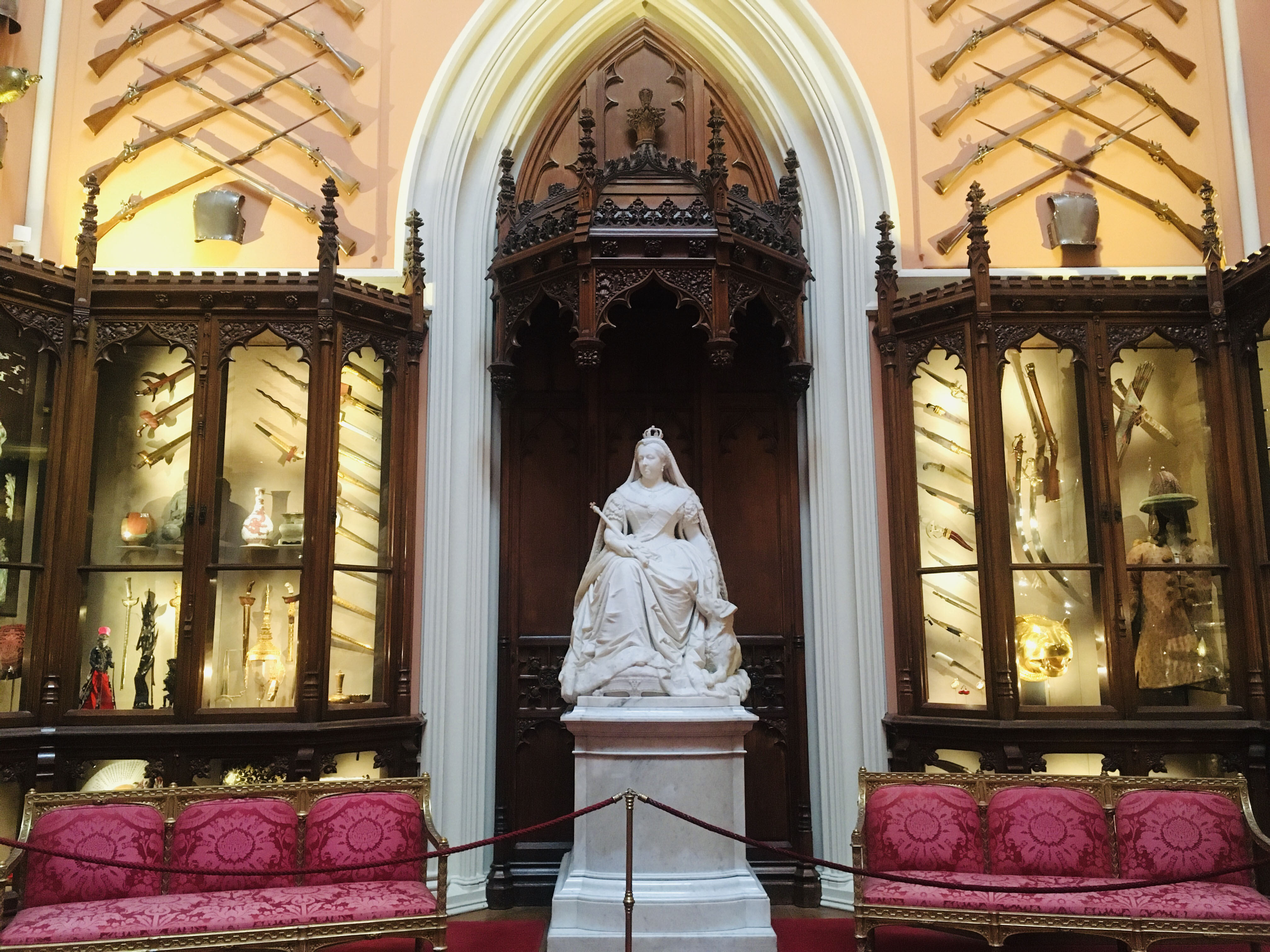
Grand Vestibule: The British Monarchy and the World
The Grand Vestibule at Windsor Castle reflects interaction between the monarchy and the wider world
Tomahawk
1775-99RCIN 67494
This unusual object combines two different weapons and Native American and European styles. A stabbing weapon, perhaps a pike, with a small triangular blade has been cut down at the shaft to make a handheld piece. To this has been added a pipe tomahawk head, formed of a hatchet blade on one side and a pipe bowl on the other. Pipe tomahawks were exchanged by settlers and indigenous groups during treaty signings and trade agreements in the eighteenth and nineteenth centuries. They functioned both as weapons and as smoking pipes. The blades were typically made from European metal, while the hollow pipe shaft itself might be local wood. Because this example has a shaft cut from a pike, it is not hollow along its entire length and cannot be used for smoking. Pipe tomahawks became important symbols of chiefly status, often carried in public by their owners.
This may be the American 'hatchet' presented to George IV when Prince of Wales by Major Hanger on 29 May 1796 and described in the Armoury at Carlton House as having a ‘Brown wood handle hollow forming a Pipe – ornamented with Platted Read and Coloured Beads – an Iron Spear at the end severed by an Iron Hatchet Blade one end forming the bowl of the Pipe.' The bead ornaments no longer survive.







